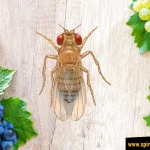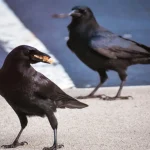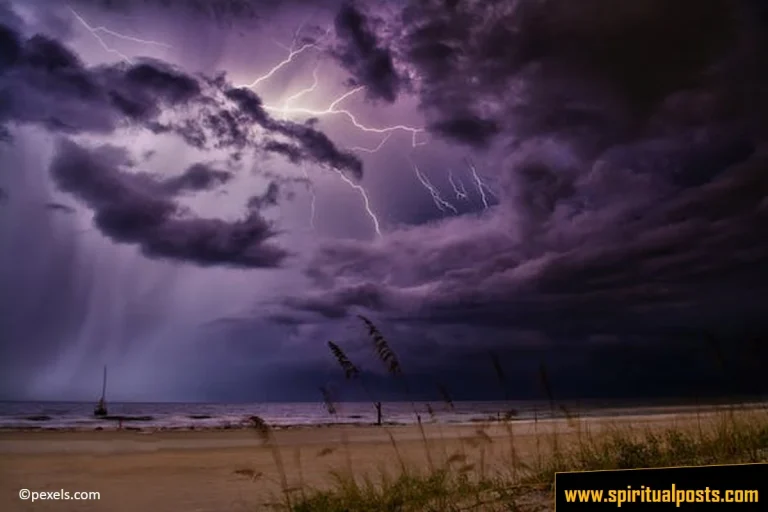The Spiritual Meanings of Wrasse and Its Symbolism
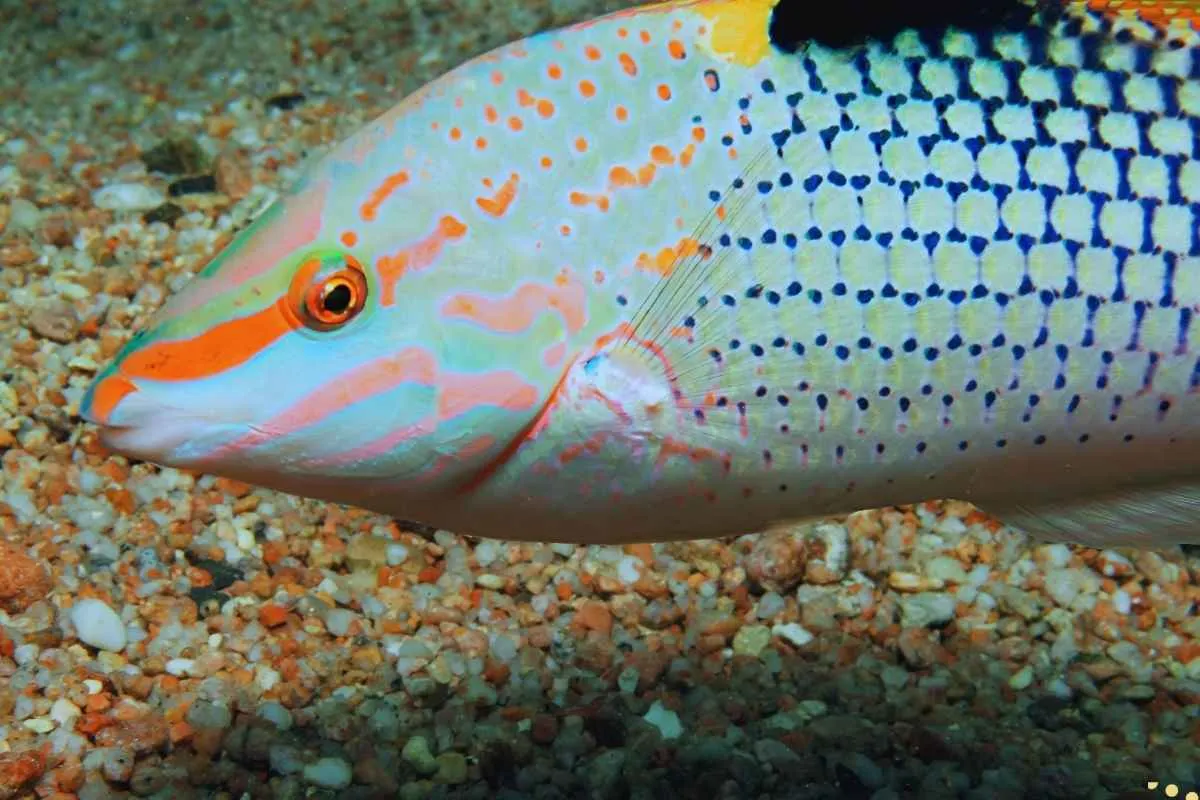
The wrasse is no ordinary fish. This vibrant, adaptable creature embodies profound spiritual symbolism that can enrich your understanding of life’s ebbs and flows. Its remarkable resilience and capacity to navigate diverse habitats mirrors the human experience, inviting you to reflect on your own ability to weather changes with grace.
Delve deeper, and you’ll uncover the wrasse’s multifaceted meanings – from spiritual purification to the integration of complementary energies. Ready to explore the wisdom this remarkable marine life holds?
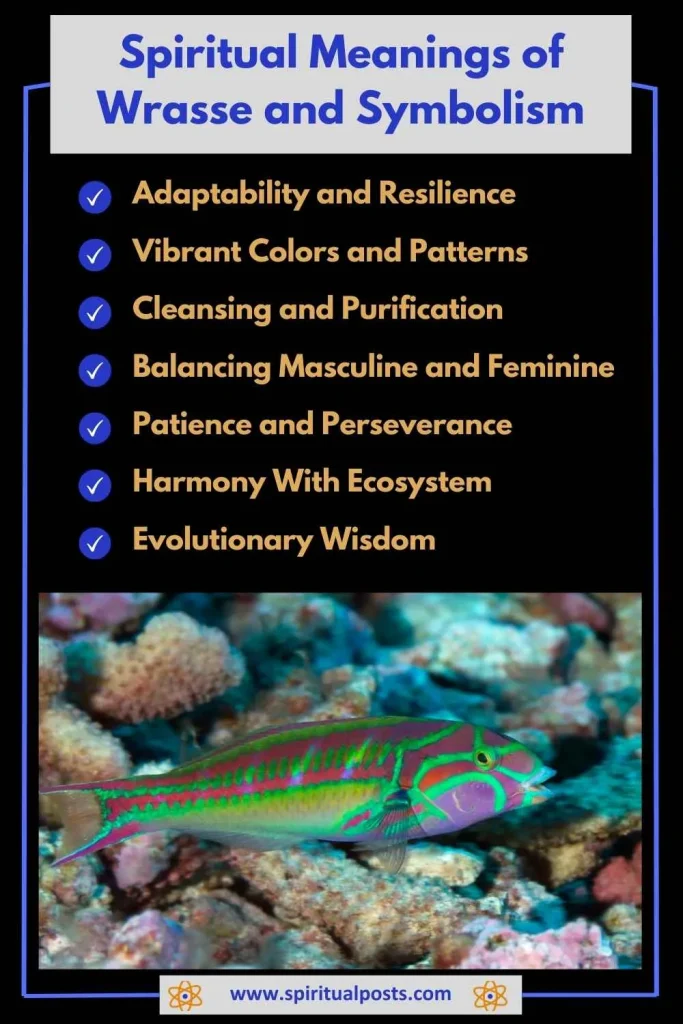
Key Takeaways
- Wrasse symbolize adaptability, resilience, and the capacity to thrive in diverse environments, reflecting lessons on flexibility and overcoming challenges.
- The vibrant colors and intricate patterns of wrasse represent the interconnectedness of all life, inspiring wonder and reverence for the natural world.
- Wrasse are associated with cleansing, purification, and the removal of negative energies, symbolizing spiritual rejuvenation and renewal.
- Wrasse embody a balance of masculine and feminine qualities, serving as a metaphor for the importance of integrating both energies within.
Introduction to Wrasse
Wrasse, a vibrant and diverse group of fish, can be found in oceans around the world, captivating the attention of marine enthusiasts and researchers alike. These fascinating creatures come in a variety of shapes, sizes, and striking color patterns, from the lively parrotfish to the iconic angelfish.
With over 600 species of wrasse identified, they’re known for their remarkable adaptability, inhabiting a wide range of underwater environments, from shallow coral reefs to deep-sea canyons.
Wrasse play a crucial role in the delicate balance of marine ecosystems, serving as cleaners, predators, and even symbiotic partners to other species. Their unique behaviors, such as the ability to change sex and their impressive hunting skills, have made them the subject of countless studies and observations.
Whether you’re an avid scuba diver or simply captivated by the wonders of the underwater world, the introduction to the world of wrasse is sure to leave you fascinated and eager to learn more.
What Does It Mean When You See a Wrasse ?
Seeing a wrasse can hold spiritual significance, as these vibrant fish are often associated with themes of transformation, cleansing, and the balance of marine ecosystems. Wrasse are known for their ability to adapt to various environments and their role in maintaining the health of coral reefs.
In some cultures, the appearance of a wrasse is seen as a sign of the need for personal or spiritual growth, a reminder to let go of old patterns and embrace change.
The distinctive colors and patterns of wrasse are also believed to symbolize the beauty and diversity of nature, inviting you to connect more deeply with the natural world. When you encounter a wrasse, it may signify a time of renewal, a call to purify your mind and body, or a message to restore balance in your life.
Pay attention to the wrasse’s movements and behaviors, as they can offer insights into your own journey of transformation and self-discovery.
Wrasse Symbolism
The spiritual symbolism of wrasse often reflects their remarkable adaptability, as these fish’s vibrant hues and dynamic behaviors are thought to embody themes of personal transformation and the delicate balance within marine ecosystems.
Wrasse’s ability to camouflage themselves or change colors as needed is seen as a metaphor for the fluidity of identity and the importance of embracing change.
Their role as cleaners in coral reef communities, removing parasites from larger fish, is interpreted as a symbol of service, humility, and the interconnectedness of all living things.
The wrasse’s tendency to swim in schools is associated with the power of community, cooperation, and the strength that comes from working together.
For many, the wrasse’s vibrant patterns and graceful movements are a reminder to approach life with a sense of playfulness, adaptability, and reverence for the natural world.
Ultimately, the wrasse’s spiritual symbolism encourages us to cultivate a flexible, service-oriented mindset and to recognize our place within the delicate web of life.
7 Spiritual Meanings of Wrasse
The vibrant colors and intricate patterns of wrasse symbolize their adaptability and resilience.
Their role in cleansing and purifying coral reefs represents a spiritual connection to the processes of healing and rejuvenation.
Wrasse’s balance of masculine and feminine energies, as well as their patience and perseverance, offer valuable lessons for personal growth and spiritual development.
Adaptability and Resilience
Although wrasse exhibit remarkable adaptability and resilience, their spiritual meanings extend far beyond these surface-level traits. As one of the most versatile and hardy fish in the ocean, wrasse have the remarkable ability to thrive in a wide range of habitats, from shallow coral reefs to deep sea environments.
Their unwavering tenacity and survival instincts have made them a symbol of strength, determination, and the power to overcome even the most daunting challenges.
Yet, the spiritual significance of wrasse transcends their physical resilience. These captivating creatures are also revered for their keen sense of perception and intuition, qualities that have long been associated with spiritual awareness and enlightenment.
By observing the adaptable and perceptive nature of wrasse, one can learn valuable lessons about the importance of flexibility, mindfulness, and the ability to navigate the ever-changing tides of life.
In this way, the wrasse serves as a potent reminder that true strength lies not in rigidity, but in the willingness to embrace change and evolve with the shifting currents of existence.
Vibrant Colors and Patterns
Vibrant colors and patterns adorning wrasse’s scales are more than just aesthetic delights – they carry profound spiritual meanings that offer deeper insights into the nature of these remarkable fish.
The iridescent blues, greens, and purples that shimmer across their bodies are seen as reflections of the ocean’s ever-changing moods and the fluidity of the natural world. These vibrant hues symbolize the fish’s adaptability, resilience, and connection to the ebb and flow of the tides.
The intricate patterns that decorate wrasse also hold great significance. Stripes, spots, and swirls are believed to represent the interconnectedness of all life, with each element playing a vital role in the greater ecosystem.
These mesmerizing designs remind us to embrace the diversity and complexity of the natural order, finding harmony in the beautiful tapestry of creation.
As you gaze upon a wrasse, allow its radiant colors and patterns to inspire a sense of wonder and reverence for the profound wisdom these fish embody.
Cleansing and Purification
Transcending their mesmerizing colors, wrasse are revered for their remarkable ability to cleanse and purify the underwater environments they inhabit, a spiritual role that commands deep respect within many coastal communities.
By diligently browsing and feeding on algae, detritus, and even parasites, these resilient fish play a vital role in maintaining the balance and health of their marine ecosystems.
Their constant grooming and cleaning activities are seen as a metaphor for the spiritual cleansing and purification of the soul, making wrasse powerful symbols of rejuvenation and renewal.
Within traditional belief systems, the wrasse’s purifying presence is believed to remove negative energies, cleanse the aura, and promote a sense of inner peace and harmony.
Balancing Masculine and Feminine
In addition to their role in cleansing and purifying the underwater realm, wrasse are revered for their ability to embody the harmonious balance between masculine and feminine energies.
These vibrant fish exhibit a striking duality, seamlessly blending characteristics typically associated with both genders. Their strong, muscular bodies and aggressive hunting behaviors represent the assertive, action-oriented masculine qualities, while their vibrant colors, graceful movements, and nurturing cleaning behaviors reflect the more nurturing, receptive feminine aspects.
This interplay of yin and yang energies within the wrasse serves as a powerful metaphor for the spiritual pursuit of balance and wholeness. By observing the wrasse, we’re reminded of the importance of integrating both masculine and feminine traits within ourselves, rather than favoring one over the other.
Through this harmonious equilibrium, we can achieve a state of inner peace, enhanced intuition, and a more holistic perspective on life’s challenges. The wrasse’s example inspires us to cultivate a similar integration of complementary forces within our own lives.
Patience and Perseverance
The wrasse’s tenacious cleaning behaviors also symbolize the spiritual qualities of patience and perseverance. You can observe these fish meticulously removing parasites and debris from the bodies of larger ocean dwellers, undeterred by the occasional aggression or evasion of their cleaning clients.
This unwavering dedication to their task, no matter the challenges, serves as a powerful reminder of the importance of steadfastly pursuing your own spiritual growth and self-improvement.
Just as the wrasse persistently goes about its cleaning duties, you must cultivate the ability to stay focused and determined on your spiritual path, even in the face of obstacles or setbacks. The wrasse’s patient approach, gently yet firmly removing impurities, can inspire you to tackle your own inner work with a similar level of care and commitment.
Harmony With Ecosystem
Another profound spiritual meaning of the wrasse lies in its harmonious integration within the ocean ecosystem.
You can witness these fish effortlessly coexisting and cooperating with a diverse array of marine life, playing a vital role in maintaining the delicate balance of their underwater habitats.
As cleaners, wrasses provide an essential service, removing parasites and dead skin from larger fish, helping to keep their communities healthy and thriving.
Their cooperation with other species showcases the interconnectedness of the ocean, where each organism is integral to the well-being of the whole.
Evolutionary Wisdom
Beyond their harmonious integration within the ecosystem, the wrasse’s evolutionary journey also holds profound spiritual insights. Their ability to adapt and thrive in diverse marine environments exemplifies the resilience and flexibility inherent in the natural world, reminding us of our own capacity to navigate life’s changes with grace.
The wrasse’s evolutionary adaptations, such as their diverse feeding strategies and specialized body shapes, showcase the ingenuity and resourcefulness of nature. These fishes’ ability to occupy a wide range of ecological niches and play unique roles within their communities speaks to the interconnectedness of all life.
By studying the wrasse’s evolutionary path, we can glean valuable lessons about the importance of flexibility, diversity, and wholistic thinking in our own personal and spiritual growth.
Just as the wrasse has evolved to thrive in ever-changing marine ecosystems, we too can learn to embrace the ebb and flow of life, adapting and transforming in ways that allow us to reach our fullest potential. The wrasse’s evolutionary wisdom invites us to cultivate a deeper reverence for the natural world and our place within it.
Wrasse Symbolism in Different Cultures and Contexts
Wrasse hold deep symbolic meaning across a variety of cultures around the world.
Native American, Celtic, Nordic, African, and Eastern traditions each ascribe unique spiritual significances to these vibrant fish.
Exploring the symbolic roles of wrasse in these diverse contexts can provide fascinating insights into the rich tapestry of human understanding and reverence for the natural world.
Native American Culture
Native American cultures have long revered the symbolic significance of the wrasse, often depicted in their intricate artworks and spiritual practices. In many tribes, the wrasse is seen as a powerful totem animal, representing qualities such as adaptability, resilience, and the ability to navigate the complexities of life with grace and agility.
Within the rich tapestry of Native American mythology, the wrasse is frequently associated with the element of water, symbolizing the flow of emotions, the cyclical nature of life, and the importance of balance and harmony.
In some traditions, the wrasse is believed to possess healing properties, with its vibrant colors and mesmerizing movements thought to have the power to restore physical, emotional, and spiritual well-being.
The wrasse’s capacity to change its appearance and blend seamlessly into its surroundings is also revered, as it’s seen as a metaphor for the importance of adaptability and the ability to navigate diverse environments with ease.
This symbolism is often reflected in the intricate designs and patterns found in Native American textiles, pottery, and other artistic expressions.
Celtic Culture
Alongside the reverence held by Native American cultures, the symbolic significance of the wrasse has also been deeply woven into the rich tapestry of Celtic traditions, where it has long been celebrated for its unique qualities and abilities.
In the ancient Celtic worldview, the wrasse was often seen as a creature of great wisdom and transformation, its agile movements and ever-changing hues representing the dynamic nature of life itself.
Within Celtic myth and legend, the wrasse was sometimes associated with the sea god Manannán, who was believed to possess the power to shapeshift and control the tides. The wrasse’s ability to navigate the treacherous underwater realms was seen as a reflection of Manannán’s mastery over the unpredictable forces of the ocean.
Additionally, the wrasse’s vibrant colors were often interpreted as a symbol of the Celtic reverence for the natural world and its boundless beauty.
Nordic Culture
How deeply does the symbolic significance of the wrasse permeate the rich cultural tapestry of the Nordic region? In the Nordic countries, this vibrant and tenacious fish has long been imbued with deep spiritual meaning.
For the Vikings, the wrasse was a symbol of resilience and adaptability, its ability to thrive in the rugged coastal waters mirroring the hardy nature of the seafaring people.
The wrasse’s striking coloration was also seen as a representation of the dynamic and ever-changing nature of the sea, a reflection of the unpredictability that was both revered and feared by the Nordic peoples.
In traditional Norse mythology, the wrasse was sometimes associated with the god Njord, the patron of sailors and coastal communities, its presence believed to bring good fortune and protection to those who ventured out onto the waves.
Even today, the wrasse remains an integral part of Nordic culinary and artistic traditions, its imagery woven into the fabric of the region’s cultural identity. From decorative carvings to regional dishes, the wrasse continues to hold a prominent place in the hearts and minds of the Nordic people.
African Culture
While the wrasse has long held spiritual significance in Nordic cultures, its symbolism extends far beyond the northern regions, permeating the rich tapestry of African traditions as well.
Across the diverse landscapes of Africa, the wrasse is revered for its connection to the natural world and its ability to embody the principles of balance, resilience, and transformation.
In many African belief systems, the wrasse is seen as a messenger between the physical and spiritual realms, serving as a bridge between the earthly and the divine. Its vibrant colors and adaptable nature are often interpreted as symbols of the ever-changing, yet interconnected, cycle of life.
The wrasse’s tendency to thrive in both saltwater and freshwater environments is also seen as a reflection of its capacity to navigate the duality of the material and the metaphysical.
Eastern Culture
Transcending the boundaries of African traditions, the symbolism of the wrasse has also found profound resonance within the rich tapestry of Eastern cultures, where its captivating essence has been woven into the intricate fabric of philosophical and spiritual teachings.
In the ancient wisdom of Taoism, the wrasse’s fluid movements and adaptability are seen as embodiments of the Tao, the universal principle of harmony and balance that governs all of existence.
Similarly, in Hinduism, the wrasse’s vibrant colors and multifaceted nature are often likened to the divine multiplicity of the cosmos, with its many-armed deities representing the interconnectedness of all things.
Furthermore, in Japanese Shinto traditions, the wrasse is venerated as a symbol of renewal and transformation, its ability to regenerate lost body parts mirroring the cyclical nature of life and death.
Across these diverse Eastern worldviews, the wrasse emerges as a powerful totem, inspiring reflections on the mysteries of the natural world and our place within it.
Hindu Culture
Within the rich tapestry of Hindu spirituality, the wrasse’s vibrant colors and multifaceted nature have long been revered as symbolic representations of the divine multiplicity of the cosmos. In Hindu iconography, the wrasse is often depicted as a manifestation of the supreme divine being, Vishnu, highlighting the deity’s ability to take on various forms and aspects.
The wrasse’s adaptability and resilience are seen as metaphors for the adaptability of the divine, capable of thriving in the ever-changing currents of existence. Its capacity to change color at will is likened to the divine’s power to transform and transcend the limitations of the physical world.
Additionally, the wrasse’s role as a ‘cleaner fish,’ removing parasites and debris from other marine creatures, is interpreted as a symbol of the divine’s capacity to purify and cleanse the spiritual realm.
Within Hindu rituals and ceremonies, the wrasse is sometimes incorporated as a visual representation of the cyclical nature of life, death, and rebirth – a manifestation of the eternal dance of creation and dissolution that lies at the heart of Hindu cosmology.
Arts and Literature
Beyond the realm of Hindu spirituality, the wrasse’s captivating form and behavior have long inspired artists, writers, and thinkers across diverse cultural traditions.
In ancient Greek mythology, the wrasse was associated with the sea god Poseidon, its vibrant hues and agile movements reflecting the power and unpredictability of the ocean. Medieval European bestiaries often depicted the wrasse as a symbol of transformation, its ability to change colors seen as a metaphor for the mutability of the natural world.
In East Asian art, the wrasse has been a favored subject, with its sinuous lines and vibrant palette adorning traditional scrolls, ceramics, and textiles. Japanese haiku poets have long celebrated the wrasse’s elegant movements, using its image to evoke the fleeting beauty of the natural realm.
Contemporary writers and visual artists continue to draw inspiration from the wrasse, exploring themes of marine conservation, the fragility of ecosystems, and the enduring mysteries of the underwater world.
Mythology
Across diverse cultural traditions, the wrasse has often been imbued with profound spiritual symbolism, its captivating form and behavior inspiring mythological narratives and artistic representations.
In ancient Grecian mythology, the wrasse was associated with the sea god Poseidon, its vibrant colors and nimble movements seen as a reflection of the ever-changing nature of the ocean.
Likewise, in certain Polynesian belief systems, the wrasse was revered as a messenger between the physical and spiritual realms, its ability to seamlessly navigate both realms granting it a sacred status.
Even in modern times, the wrasse continues to hold symbolic significance in various contexts. In some Eastern philosophies, the wrasse is viewed as a symbol of adaptability and resilience, its capacity to thrive in diverse marine environments mirroring the human ability to navigate life’s challenges.
Furthermore, the wrasse’s striking visual appeal has made it a common motif in decorative arts, its image adorning everything from ceramics to textiles, serving as a reminder of the natural world’s beauty and wonder.
Wrasse Biblical Meanings
While the Bible doesn’t explicitly mention wrasse, certain scriptural passages may offer insights into the spiritual meanings and symbolism associated with this fascinating marine creature.
Though the wrasse isn’t directly referenced, the biblical themes of transformation, renewal, and the interconnectedness of all life could be applied to these vibrant, adaptable fish.
For instance, the wrasse’s ability to change color and blend into its environment could be seen as a metaphor for the human capacity for spiritual growth and adaptability.
Similarly, the wrasse’s role in maintaining the delicate balance of coral reef ecosystems may parallel the biblical emphasis on stewardship and our responsibility to care for the natural world.
Additionally, the wrasse’s tendency to swim in schools could symbolize the importance of community and collective support in the journey of faith.
While the connections between wrasse and biblical teachings aren’t explicit, these marine creatures may offer thoughtful parallels for those seeking deeper spiritual insights through the natural world.
Spiritual Meaning of Dream About Wrasse
Having explored the biblical resonances of the wrasse, let’s now turn your attention to the spiritual meanings that may arise from dreaming about this captivating marine creature. Dreams featuring the wrasse can symbolize adaptability, versatility, and the ability to navigate life’s ebbs and flows with grace.
The wrasse’s vibrant colors and dynamic movements may represent your own spiritual and emotional journey – one filled with transformation, flexibility, and the willingness to explore new depths within yourself.
Additionally, the wrasse’s tendency to inhabit reef ecosystems can signify the importance of finding balance, harmony, and community in your life. Your dream may be prompting you to examine how well you’re integrating diverse aspects of your being or connecting with supportive networks.
Ultimately, the spiritual meaning of a wrasse dream is highly personal, inviting you to reflect on the areas of your life that require greater fluidity, resilience, and a connection to the natural rhythms of the world around you. Pay close attention to the details and emotions within the dream, as they can provide valuable insights into your spiritual growth.
Wrasse Spirit Animal, Totem, and Power Animal
The wrasse’s marine adaptability and vibrant presence make it a powerful spirit animal, totem, or power animal for those seeking greater fluidity, resilience, and connection to the natural world.
As a spirit guide, the wrasse may inspire you to embrace flexibility, flow with the tides of life, and tap into the innate wisdom of the oceans. Its totem energy can bolster your ability to navigate change, overcome obstacles, and maintain a balanced, harmonious perspective.
As a power animal, the wrasse encourages you to cultivate a strong, versatile sense of self, much like its ability to thrive in diverse marine environments. Its colorful, expressive nature may also inspire creativity, self-expression, and a deeper appreciation for the beauty and mysteries of the aquatic realm.
Meditating on the wrasse’s qualities can help you develop a more fluid, adaptive approach to life, empowering you to move gracefully through life’s ebbs and flows. By aligning with the wrasse’s spirit, you may discover newfound resilience, adaptability, and a profound sense of kinship with the natural world.
Final Words
The wrasse’s remarkable qualities symbolize profound spiritual truths.
Its resilience, interconnectedness, and patient nature offer invaluable lessons for navigating life’s ebbs and flows.
Whether as a cleansing force or a representation of balanced energies, the wrasse serves as a powerful totem, inspiring us to approach the world with wonder, reverence, and a steadfast determination to grow and thrive.
You Might Also Like
1) The Spiritual Meanings of Angelfish and Its Symbolism
2) The Spiritual Meanings of Anglerfish and Its Symbolism
3) The Spiritual Meanings of Angelshark and Its Symbolism
4) 10 Spiritual Meanings & Symbolism of Rat (+Totem, Omens)
